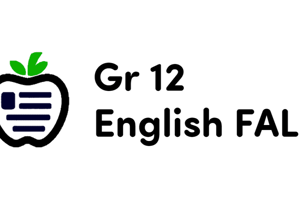Podcast
Questions and Answers
There are four main types of conjunctions: coordinating conjunctions, correlative conjunctions, subordinating conjunctions, and ______ conjunctions.
There are four main types of conjunctions: coordinating conjunctions, correlative conjunctions, subordinating conjunctions, and ______ conjunctions.
Compound
______ are words that connect clauses together within a sentence.
______ are words that connect clauses together within a sentence.
Conjunctions
Common coordinating conjunctions include 'and', 'so', 'because', and ______.
Common coordinating conjunctions include 'and', 'so', 'because', and ______.
but
Coordinating conjunctions join independent clauses that perform similar functions or express ______ thoughts.
Coordinating conjunctions join independent clauses that perform similar functions or express ______ thoughts.
Subordinating conjunctions introduce dependent clauses that give background information or explain ______ something happens.
Subordinating conjunctions introduce dependent clauses that give background information or explain ______ something happens.
Compound conjunctions consist of two adjacent coordinating conjunctions joined without ______.
Compound conjunctions consist of two adjacent coordinating conjunctions joined without ______.
Study Notes
Conjunctions
Conjunctions are words that connect clauses together within a sentence. They create relationships between ideas and make complex sentences easier to understand. There are four main types of conjunctions: coordinating conjunctions, correlative conjunctions, subordinating conjunctions, and compound conjunctions.
Coordinating Conjunctions
Coordinating conjunctions join independent clauses that perform similar functions or express parallel thoughts. Common coordinating conjunctions include "and", "so", "because", and "but".
Example: The cake fell on my head, but it didn't hurt.
Here, "but" is a coordinating conjunction connecting two independent clauses that contrast each other—one stating that the accident happened, and the other denying potential harm.
Subordinating Conjunctions
Subordinating conjunctions introduce dependent clauses that give background information or explain why something happens. They provide details or reasons related to the main idea expressed in the independent clause.
Example: Although she studied hard for the exam, she still failed.
Here, "although" is a subordinating conjunction indicating that despite her studying, she did not pass the test.
Compound Conjunctions
Compound conjunctions consist of two adjacent coordinating conjunctions joined without punctuation. They are rare in modern English prose but common in older works.
Example: Not only did he clean his room, but he also washed the windows.
Here, "Not Only..." and "But Also..." are compound conjunctions joining two independent clauses that present actions taken care of by the subject.
Adverbial Clause Connectors
Adverbial clause connectors increase the complexity of sentences by introducing dependent clauses that describe circumstances or conditions. They allow multiple layers of thought within one sentence.
Example: After finishing the exam, I went outside for fresh air.
Here, "After Finishing..." introduces a circumstantial adverbial clause describing when the action took place.
Studying That Suits You
Use AI to generate personalized quizzes and flashcards to suit your learning preferences.
Description
Learn about the different types of conjunctions in English grammar such as coordinating, subordinating, compound conjunctions, and adverbial clause connectors. Explore how these words connect clauses together to form complex sentences.




